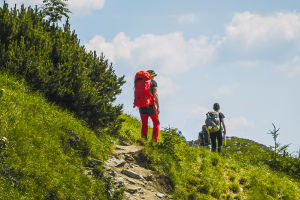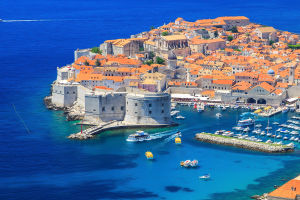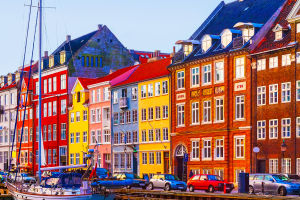Lykkers, if you're seeking sun-kissed shores, dramatic cliffs, and hidden coves surrounded by crystal-clear waters, the southernmost tip of Italy delivers a coastal escape like no other.
Stretching nearly 200 kilometers from the Tyrrhenian to the Ionian Sea, Reggio Calabria and its surroundings offer a rich variety of landscapes, beach styles, and authentic experiences.
Here's a guide to everything you need to know to plan your perfect seaside holiday.
The Costa Viola: Nature, History, and Colors
What to Expect:
The Costa Viola stretches from Cannitello to Palmi. This area is famed for its dramatic cliffs, colorful reflections at sunset, and a unique marine ecosystem featuring colonies of black and white coral.
Beaches here vary from rocky stretches to sandy and pebbly shores, making it ideal for explorers and photographers alike.
Where It Is:
The Costa Viola runs along the northwestern edge of the province of Reggio Calabria, between the sea and the Aspromonte mountains.
Top Beaches:
- Scilla (Marina Grande): Just 15 minutes by train from Reggio Calabria, this beach combines a scenic promenade with transparent waters and is near the charming fishing village of Chianalea.
- Cala delle Feluche: A quiet beach within Chianalea, with picturesque views and great spots for seafood lovers.
- Bagnara Calabra: A 3-km stretch framed by cliffs. Notable spots include the Castle Emmarita and hidden coves like Cala Janculla and Caletta Rovaglioso, accessible only on foot or by boat.
What to Do:
Snorkeling, diving, and boat trips are popular here. For panoramic experiences, consider the Tracciolino trail leading to Cala Janculla.
Opening Hours and Costs:
Beaches are open year-round, free of charge. Boat rentals vary by provider, typically starting from €50 per half-day.
The Ionian Side: Wild Beauty and Clear Waters
What to Expect:
This coastline offers wider, quieter beaches with untouched natural surroundings. Waters are especially calm and perfect for long swims or peaceful relaxation.
Top Beaches:
- Capo Bruzzano: Near the town of Bianco, this beach is rugged and scenic, with large-grain light sand and no facilities—ideal for nature lovers.
- Marina di Gioiosa Ionica: Known for soft sand and calm, clear water along the Costa dei Gelsomini.
- Capo Spartivento (Brancaleone): The southernmost point of the peninsula, favored by wind- and kite-surfers due to the strong and shifting winds.
- Bova Marina: A beach rich in heritage and natural charm, close to historic Bova Superiore.
- Annà Beach (Melito Porto Salvo): Located at the very tip of Italy's "boot", perfect for snorkeling and diving.
Opening Hours and Costs:
Public beaches are free. For diving excursions or guided tours, prices start around €35.
The Beaches of Palmi: Between Sea and Mountains
Highlights:
Palmi's coastline includes sandy stretches like the Baia della Tonnara and pebbled hideaways such as La Marinella. Surrounded by Monte Sant'Elia, the area is a dream for underwater photography, with sea caves like Grotta delle Sirene and Grotta Perciata.
How to Get There:
Palmi is well-connected by regional trains and buses from Reggio Calabria, taking about 40–60 minutes.
Entry and Equipment:
Most beaches are free. Some remote ones are only accessible by boat or steep paths, and are not equipped—bring essentials.
Reggio Calabria's City Beach: Easy and Lively
What to Expect:
The city's main beach features golden sand with coarse grains, sunbed rentals, and beach clubs. It's perfect for families or anyone wanting comfort close to the city center. The nearby Lungomare Falcomatà is perfect for evening strolls, gelato in hand.
Accessibility:
Easily reachable by foot or public transport from anywhere in the city.
Facilities and Costs:
Sunbeds and umbrellas are typically €15–20 per day. Beach access is free.
Getting to Reggio Calabria
By Train:
Direct trains connect Reggio Calabria to major Italian cities including Rome, Naples, and Milan. The main station is Reggio Calabria Centrale.
Travel Tips:
Regional trains also connect visitors to beaches like Scilla, Palmi, and Gioiosa Ionica, making day trips convenient and budget-friendly.
Ticket Costs:
Train fares vary: expect €40–70 from Rome, and around €25–30 from Naples. Regional fares for local stops range from €2–8.
Accommodation and Where to Stay
Average Costs:
- Budget Hotels & Guesthouses: €40–60 per night
- Mid-range Hotels & B&Bs: €60–90 per night
- Seaside Resorts or Boutique Hotels: €100–180 per night
Top Areas to Stay:
- Reggio Calabria: Ideal for those wanting city comforts and nearby beaches.
- Scilla & Chianalea: Perfect for romantic stays and panoramic views.
- Gioiosa Ionica or Palmi: Great bases for exploring natural attractions.
Booking Tips:
Book early during summer, especially for seaside rooms in July and August.
Final Thoughts
Reggio Calabria's coastlines invite Lykkers to discover a side of Italy where nature, heritage, and the sea meet in harmony. From the striking Costa Viola to the unspoiled Ionian beaches, every stop offers something unique—hidden grottos, soft sands, ancient villages, and opportunities to dive into both the sea and local life.
Whether planning a peaceful retreat or an active adventure, this corner of southern Italy promises memorable moments, breathtaking views, and warm hospitality along every stretch of the coast.


